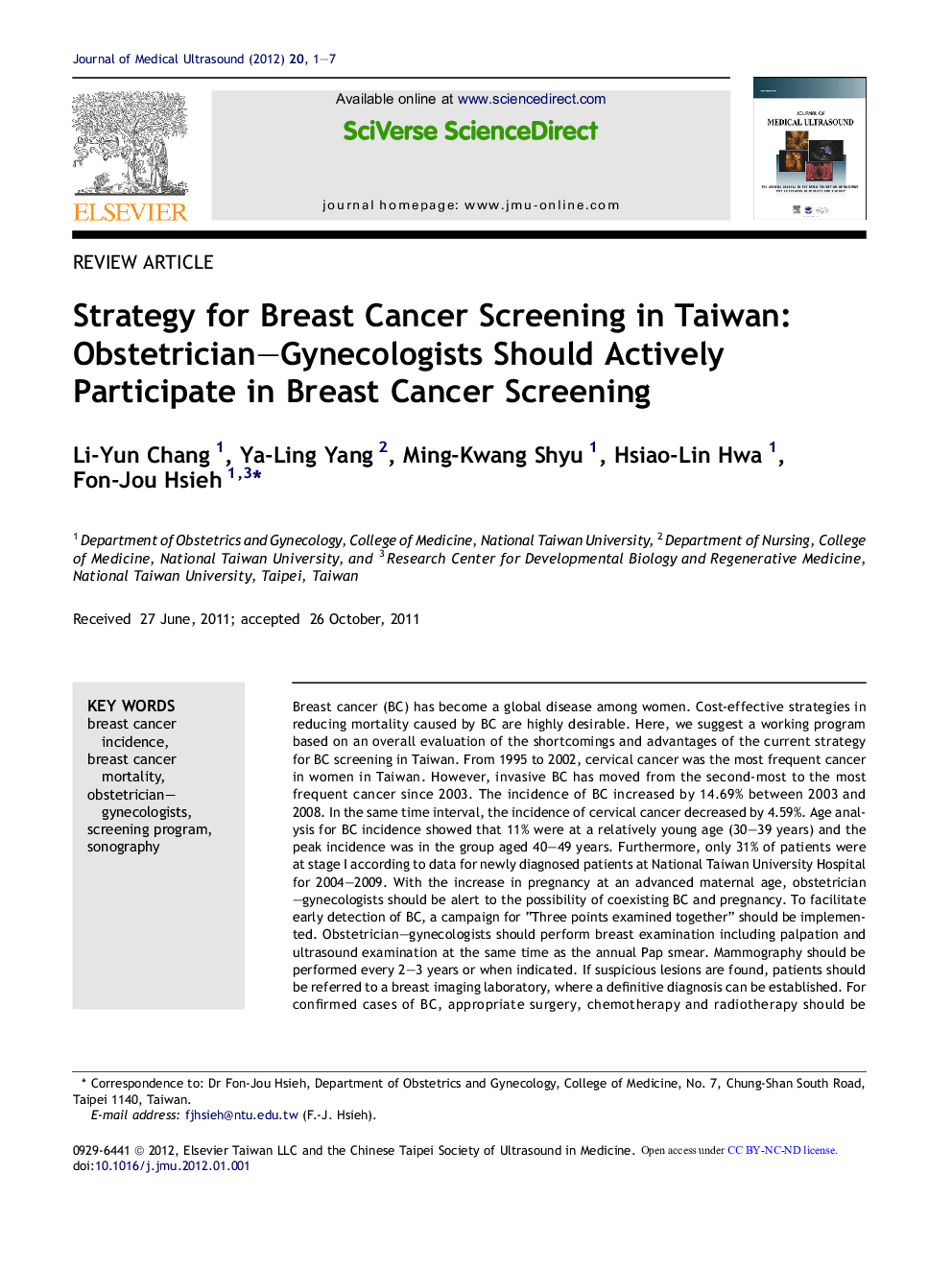| Article ID | Journal | Published Year | Pages | File Type |
|---|---|---|---|---|
| 4233221 | Journal of Medical Ultrasound | 2012 | 7 Pages |
Breast cancer (BC) has become a global disease among women. Cost-effective strategies in reducing mortality caused by BC are highly desirable. Here, we suggest a working program based on an overall evaluation of the shortcomings and advantages of the current strategy for BC screening in Taiwan. From 1995 to 2002, cervical cancer was the most frequent cancer in women in Taiwan. However, invasive BC has moved from the second-most to the most frequent cancer since 2003. The incidence of BC increased by 14.69% between 2003 and 2008. In the same time interval, the incidence of cervical cancer decreased by 4.59%. Age analysis for BC incidence showed that 11% were at a relatively young age (30–39 years) and the peak incidence was in the group aged 40–49 years. Furthermore, only 31% of patients were at stage I according to data for newly diagnosed patients at National Taiwan University Hospital for 2004–2009. With the increase in pregnancy at an advanced maternal age, obstetrician–gynecologists should be alert to the possibility of coexisting BC and pregnancy. To facilitate early detection of BC, a campaign for “Three points examined together” should be implemented. Obstetrician–gynecologists should perform breast examination including palpation and ultrasound examination at the same time as the annual Pap smear. Mammography should be performed every 2–3 years or when indicated. If suspicious lesions are found, patients should be referred to a breast imaging laboratory, where a definitive diagnosis can be established. For confirmed cases of BC, appropriate surgery, chemotherapy and radiotherapy should be provided. In short, active participation of obstetrician–gynecologists is a must in the campaign against BC in Taiwan.
